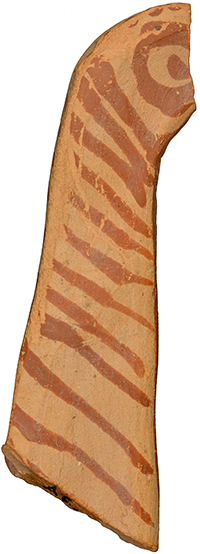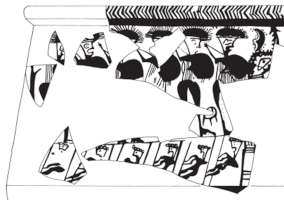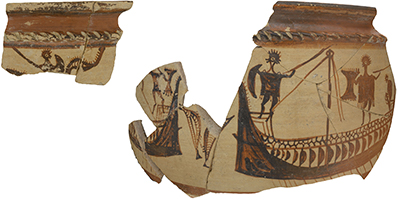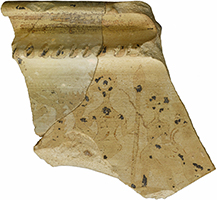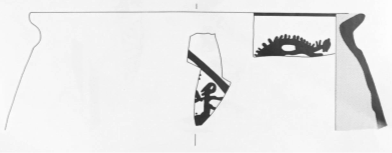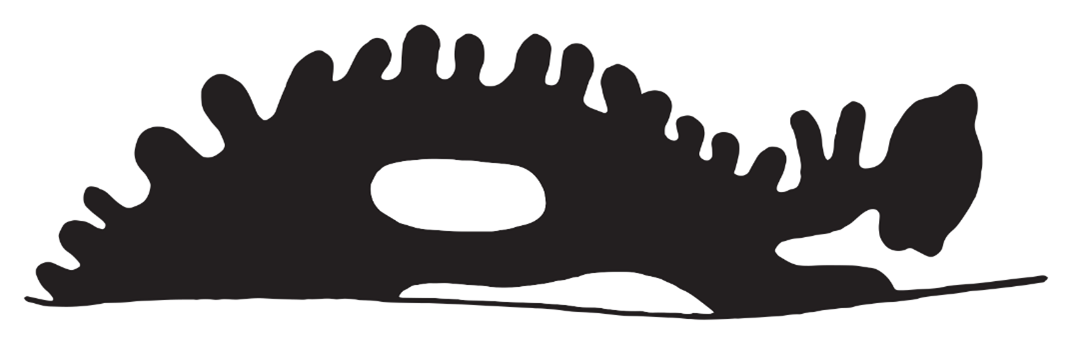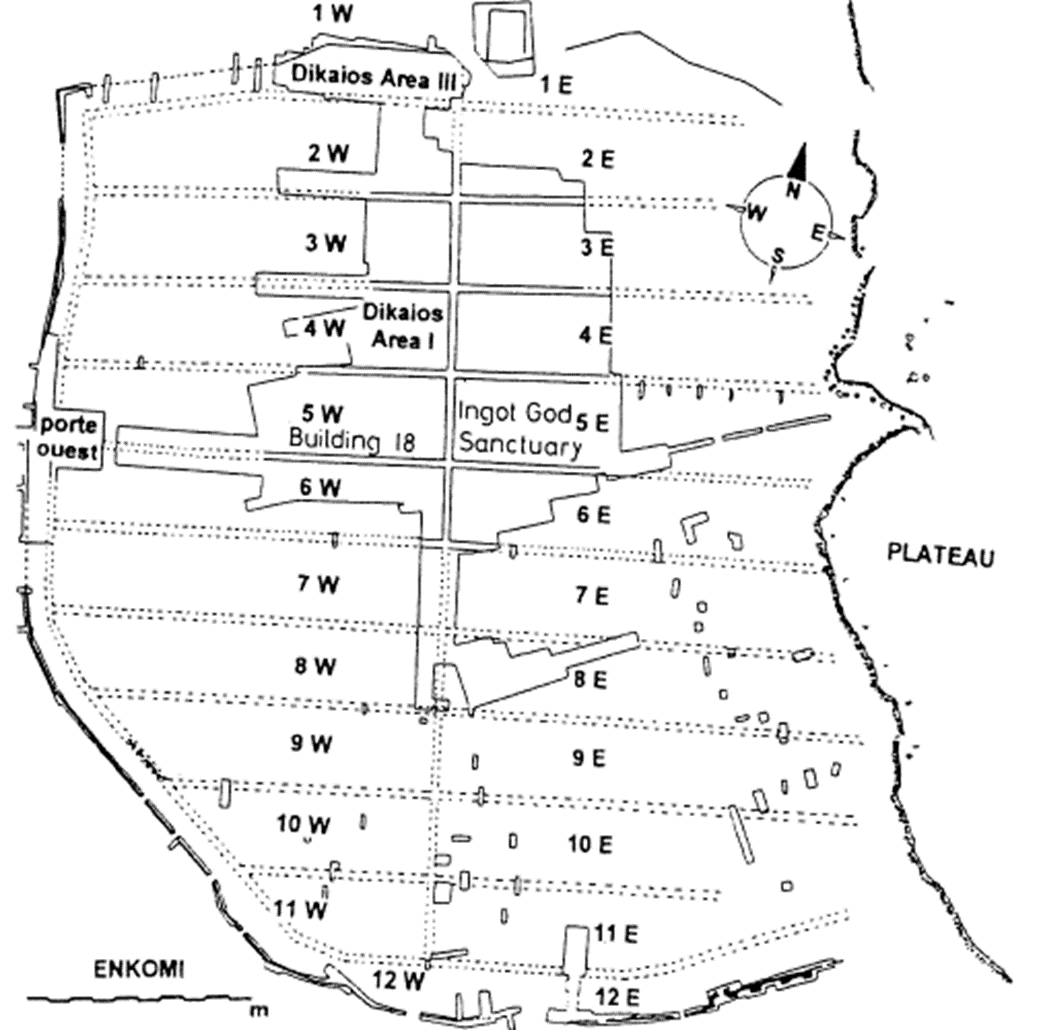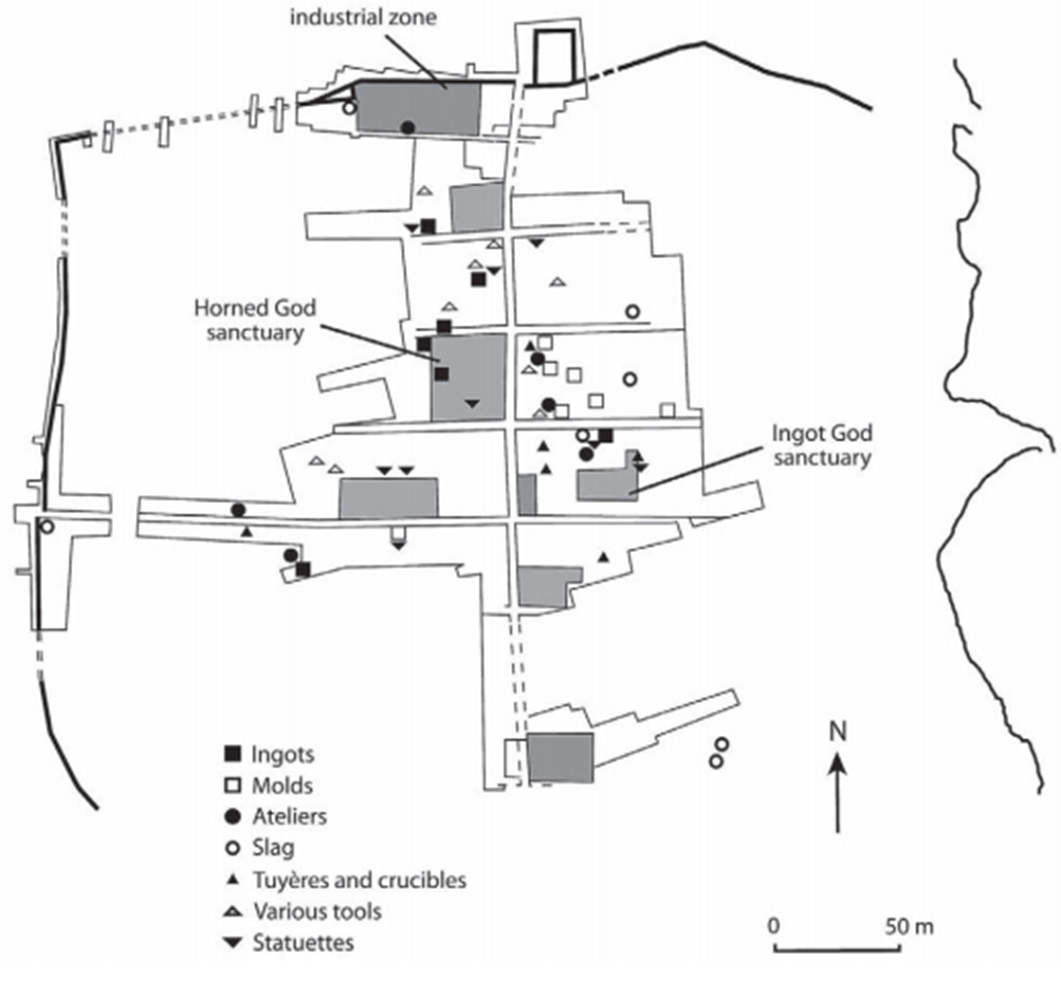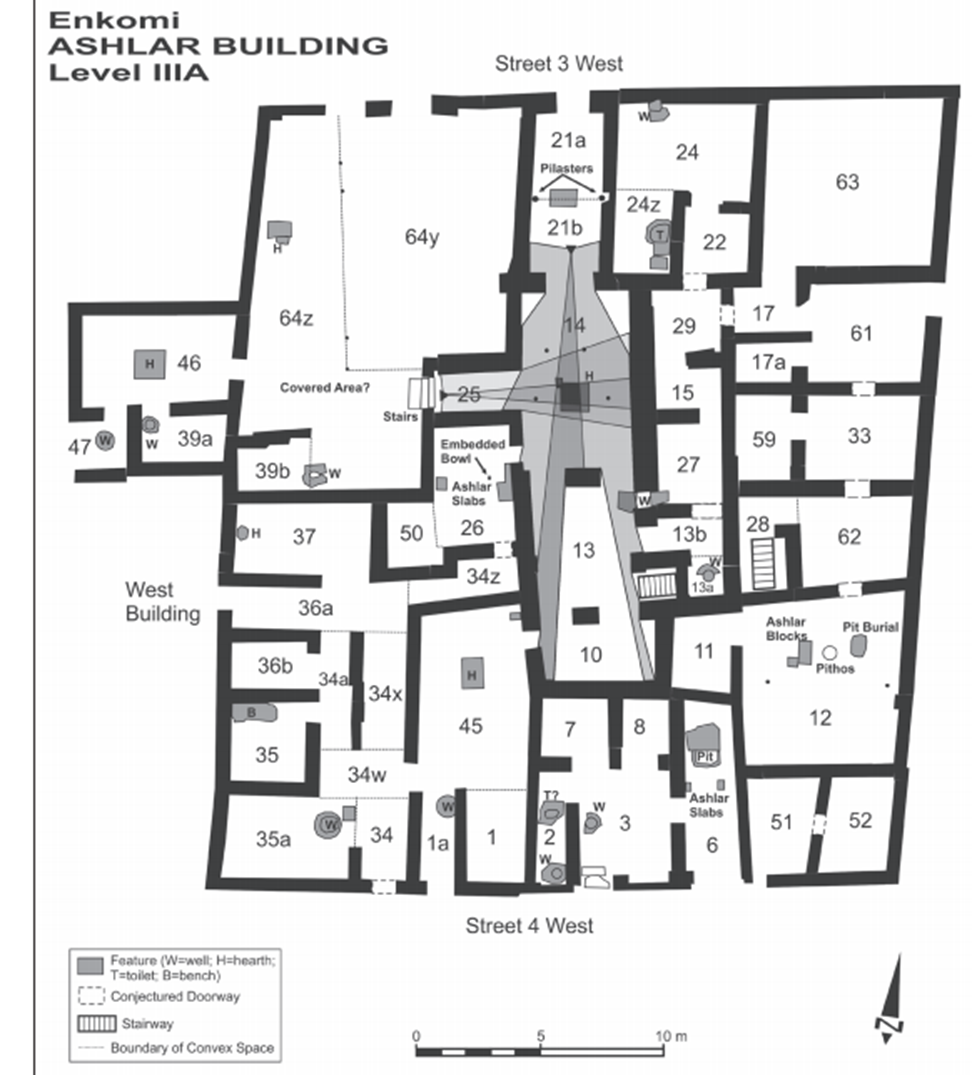Fragments of a naval battle scene, with ship facing right. The upper fragment preserves the distinct bird-headed device atop the stempost. It has a blank eye, a recurving beak, and short parallel lines extending from the upper side of its beak and head. There is an oval object at the tip of its beak, as if it is about to eat something. The lower sherd shows a forestay and a human figure in silhouette, with its hands seemingly extended to the right.
Helladic galley
C2
LH IIIC middle (1140-1120 BC). Level IIIA destruction, first part of LH IIIIC middle
Enkomi, Area I, room 26
Two sherds from a locally made krater
Enk 5549/3 + Enk 5549/4
Dikaios 1969-71: pl. 72.8 5549/3; Knapp 2019: 144; Mountjoy 2005: 424, pl. XCVIId
At the end of LC II ca. 1225 and then again c. 1200 Enkomi suffered severe destruction but was rebuilt each time. LCIII (1200-1050)/Level IIIA represents a major reorganization of Enkomi’s city plan. The previous layout of domestic quarters arranged between large open areas was replaced by a town-planning grid with a network of crisscrossing streets enclosed by a cyclopean fortification wall (400m north-south, 350m east-west) with rectangular towers projecting at intervals. The grid plan consists of a single main street, straight and oriented roughly north-south, with side streets at right angles. Public and sacred buildings were extensively enhanced using ashlar masonry. Beginning with Level IIIA, Area I consisted of a structure referred to as the Ashlar Building. Although in design it maintained the character of the pre-existing building (making it a descendant of the LC IIC complex), its construction method was entirely changed since a considerable part was made of ashlar masonry, giving it its name. The excavated ashlar building measures 32.5 m north/south by 28.5m east/west, and was centered on a large pillared room (megaron). It appears to have been used for domestic purposes although its size and monumental character indicate an official residence at the very least. This structure was violently destroyed ca. 1190 and reconstructed shortly after in Level IIIB (LC III A:2 – III B:1) mainly using rubble, but also some reused dressed blocks and mud bricks, thus giving up on attempting to restore its monumental nature. This reconstructed building enjoyed a long lifetime, with another destruction c. 1125/1000 followed by a brief reoccupation until 1075 (level IIIC).
During Level IIIB, the pillared megaron was divided thus losing its official character. The residential and domestic use was restricted to the northwestern, north-central and western sectors, while cult activity was introduced in the south-central and southeastern sectors (sanctuaries of the Horned God and of the Double Goddess). These sanctuaries therefore consist of a suite of apartments within the complex: they are not structurally detached from other rooms which do not have a religious function. This change in use was accompanied by a change in the building’s orientation, the main entrance now located to the south instead of the north. Two megara were established, one to the east (Room 12), and the other one more to the west (Room 45) which communicated directly with the street to a second southern entrance. Room 26 in which the locally made krater with the ship depiction was found occupied an important position during all phases. In Level IIIA, it had direct access to the megaron (Room 14), an ideologically charged space with a monumental hearth that represented the centre of the entire complex. During Level IIIB to which the find belongs, the room forms a direct extension of the hall to the north of the sanctuary of the Horned god. This level also produced two terracotta loom weights, a fragmentary terracotta bull figurine, a pilgrim flask and a bronze arrowhead.
Dikaios, P. 1969-1971. Enkomi: Excavations 1948-1958. Mainz: Ph. von Zabern.
Knapp, A. B. 2018. Seafaring and Seafarers in the Bronze Age Eastern Mediterranean. Leiden: Sidestone Press.
Mountjoy, P.A. 2005. “Mycenaean Connections with the Near East in LH IIIC: Ships and Sea Peoples,” in R. Laffineur and E. Greco (eds.) Emporia: Aegeans in the Central and Eastern Mediterranean: Proceedings of the 10th International Aegean Conference. Athens, Italian School of Archaeology, 14–18 April 2004, (Aegaeum 25). Liège: Université de Liège, pp. 423–427.



